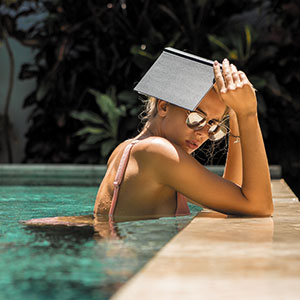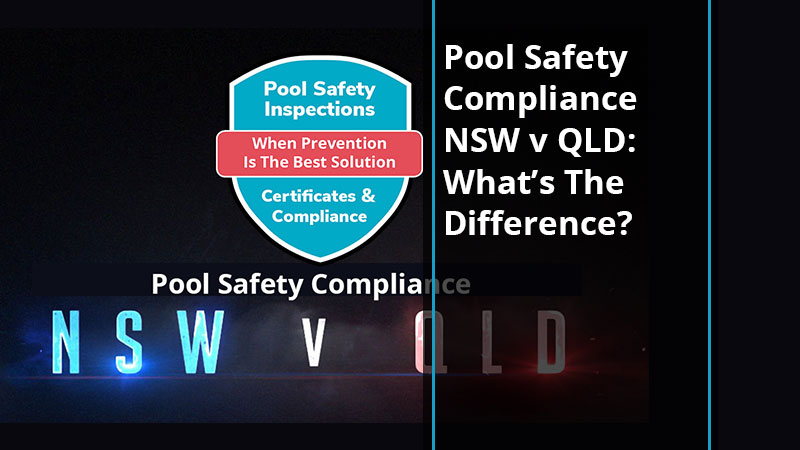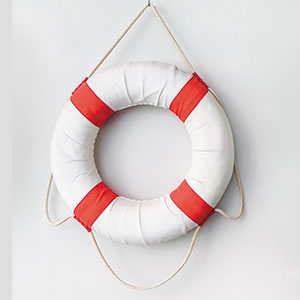New South Wales, the First State; Queensland the Sunshine State.
Blue and Maroon. Cockroaches and Cane Toads.
State v State.
The war of the east coast states rages long – especially in pool safety. Pool Safety Compliance NSW v QLD: What’s The Difference?
With the Australian Standard regulation (AS1926-2012) for pool safety across the nation, NSW and QLD are bound to have similarities – it simply comes down to details where the state laws differ.
NSW Pool Safety Differences
NSW certified or council pool safety compliance inspector
In NSW, pool safety compliance certificates are issued by certified and council pool safety inspectors.
They are also known as
Pool Safety Inspector
Pool Certifier
Pool Inspector
Essentially, the pool safety inspector’s role is to
- inspect pools, spas and barriers, and
- lodge the inspection and details through the NSW Swimming Pool Register
NSW pool safety compliance certificate
A pool safety compliance certificate certifies a swimming pool or swimming pool spa’s fences and barriers meet the state safety requirements.
In New South Wales, pool compliance certificates are issued by E1 certified and council pool safety inspectors.
This certificate needs to be renewed every 3 years.
NSW pool safety certificate of non compliance
A pool safety compliance certificate certifies a swimming pool or swimming pool spa’s fences and barriers meet the state safety requirements.
In New South Wales, pool compliance certificates are issued by E1 certified and council pool safety inspectors.
If an E1 certified and council pool safety inspector finds a pool does not meet the swimming pool spa fences and barriers safety requirements, a certificate of non-compliance is issued.
This certificate is valid for 12 months, allowing any necessary rectification works to be completed.
NSW: 1 act, 3 standards
In NSW, the requirements for pool and spa barriers and fences depend on
- when the pool was built, and
- the type of pool
NSW Fair Trading has 3 pool safety standards – which can be read >here. They are set according to when the pool was constructed
- AS 1926-1986, fences and gates for private swimming pools which applies to pools constructed prior to 30 August 2008
- AS 1926.1 – 2007, swimming pool safety, Part 1 safety barriers for swimming pools which applies to pools constructed between 1 September 2008 to 30 April 2013
- AS1926.1 – 2012, swimming pool safety, Part 1 safety barriers for swimming pools constructed after 1 May 2013
NSW 6 week Council Notification: Section 22E Notice
In NSW, if your pool is not compliant, by law Council is notified 6 weeks after the first inspection.
NSW council pool safety inspection program
Private E1 Certified and Council Pool Safety Inspections can issue pool safety compliance certificates for pool, spa and barrier. Even if you are directed by the Local Authority – aka Council – to get a Pool Certificate of Compliance, private E1 Certifiers – like us here at Pool Safety Solutions – can still help you.
NSW Council and private E1 Certifiers are bound by Fair Trading NSW Government to lodge the inspection and details through the NSW Swimming Pool Register. Council and private certifiers essentially offer the same service, but at different levels:
| Local Authority | Private E1 Certifiers |
| are cheaper, but take longer | may charge more, but as a private business, are driven to provide excellent service and a more efficient outcome (or they won’t be in business for very long) |
| are under no obligation to provide any service, help you or relieve any stress or intimidation you may feel | are obligated to help you with excellent service, direction and advice where referrals, reviews and testimonials are bloodlines to small business success |
| wade through the bureaucracy on your behalf for the most efficient and cost effective outcome | |
| assists you with all aspects of your inspection and takes care of all the details for you | |
| are not necessarily easy to contact or will contact you at their leisure and not at your convenience | are only a phone call or email away for your questions |
| can supply handwritten reports with little detail | use the top-of-the-line digital systems for a detailed report including photos with descriptions and explanations on rectifications |
| are in the role of finding problems and can not offer solutions, as that is not part of their role | driven to arm you with information and details to help you reach compliance |
| are renown for being booked 3 – 6 weeks in advance | offer Same Day Certificates and can reach you within the week, or sooner |
| notorious for finding problems outside of the pool and spa areas and barriers | specialist focus on Pool Safety only |
| are wandering into unchartered waters by interpreting the laws through “Best Practice” | have a thorough interpretation and explanation of state government pool safety following approved E1 Training Courses taking a certifier through their paces in NSW rules, regulations, acts and standards |
| offer all the expertise and abilities to translate these often confusing intricate details into everyday speak to the customer | |
| are council, and council means red tape | are not council |
QLD Pool Safety Differences
QLD pool safety inspector
In QLD, pool safety certificates are issued by Pool Safety Inspectors.
They are also known as
Pool Inspectors
Essentially, the pool safety inspector’s role is to
- inspect pools, spas and barriers, and
- lodge the inspection and details through the QLD Pool Safety Register.
QLD Form 24 Pool Safety Certificate
A Form 24 pool safety certificate certifies a swimming pool or swimming pool spa’s fences and barriers meet the state safety requirements.
In Queensland, pool safety certificates are issued by pool safety inspectors.
Non-shared pool safety certificates are valid for 2 years.
Shared-pool certificates are valid for 1 year.
QLD Form 26 Non-Conformity Notice
A pool safety compliance certificate certifies a swimming pool or swimming pool spa’s fences and barriers meet the state safety requirements.
In Queensland, pool safety certificates are issued by pool safety inspectors.
If a pool safety inspector finds a pool does not meet the swimming pool spa fences and barriers safety requirements, a Form 26 non-conformity notice is issued, allowing the property up to 90 days to complete any necessary rectification works.
QLD: 1 act, 1 standard
In QLD, the requirements for pool and spa barriers and fences are ruled by the QLD MP3.4 Pool Safety Standard – which can be read >here.
This standard covers
- pool and spa fences and barriers
- NCZ non-climbable zone
- pool gate latch safety, and
- CPR Signage
QLD 90-day Council Notification
In QLD, if your pool is not compliant, by law Council is notified 90-days after the first inspection.
NSW & QLD Pool Safety Comparisons
NSW & QLD: What is the definition of a pool?
Essentially, a swimming pool, swimming pool spa, swimming bath, wading pool or paddling pool is designed as a structure to hold water for swimming and other water activities while adding value and lifestyle benefits to a property.
NSW Fair Trading defines a pool >here as any excavation, structure or vessel including swimming pools and spa pools that are
- capable of being filled with water to a depth greater than 30cm, and
- used, designed, manufactured or adapted for swimming, wading, paddling or any other human aquatic activity
The QBCC Queensland Building & Construction Commission classes a swimming pool or spa >here as
- an above or below ground structure capable of holding 300mm of water or more, and
- primarily used for swimming or bathing.
Swimming pools include concrete pools, fibreglass pools, inflatable pools, temporary pools, wading pools, above ground pools and spa pools. A spa pool is classified as a swimming pool but includes any excavation, structure, or vessel in the nature of a spa pool, flotation tank, tub – though not a spa bath.
NSW & QLD: What is pool safety compliance?
Statistics show the majority of drownings in private swimming pools occurred with children aged 0-4 years, with inadequate pool fencing a major factor contributing to these drownings – across both NSW and QLD. The latest statistics from Royal Life Saving Australia’s Drowning Reports can be read >here.
The ultimate goal for pool safety compliance is to prevent these drownings while specifically focusing on pool fence and barriers.
Pool safety compliance means your pool meets the legal pool safety requirements for your state for
- height and strength of barriers
- non-climbable zones
- gates and their latching requirements,
- preventing direct access from a building into a pool area, and
- adequate signage
NSW & QLD: Do I need to register my pool?
To prevent the high-risk group of children aged 0-4 drowning in private swimming pools, state pool registers in NSW and QLD were set up to track and monitor each pool.
In NSW, all residential pools must be registered with the NSW Swimming Pool Register.
In QLD, all residential pools must be registered with the QBCC Swimming Pool Register.
Failure to register your pool can result in a fine.
NSW & QLD: Why do I need a pool safety compliance certificate?
As part of the delicious paperwork to maintain a wonderfully safe standard of living, a pool compliance certificate is needed when
- selling or leasing a property with a swimming pool or spa
- building a new swimming pool or spa on a property
- a new fence is being built around an existing swimming pool or spa
- a property is purchased with a pool or spa 90 days from settlement
- running a family day care, home care or at-home child care facility
- requested by your bank applying for or refinancing your home loan, or
- directed by council
You can sell your home with a NSW certificate of non compliance or QLD Form 26 non-conformity notice, as long as
- you provide a copy of your certificate or notice to the buyer
- the buyer acquires a pool safety compliance certificate within ninety (90) days after settlement
NSW & QLD: What can I do for a compliant pool? Can I DIY Pool Safety?
You certainly can DIY Pool Safety – and do all the hard work before the pool safety inspector arrives.
Check
- trees and vegetation are not in the 900mm arc of the non-climbable zone
- fences are at least 1800mm high with no more than 100mm gaps in between and under fences
- gates are self-closing
- CPR sign is in the vicinity of the pool
Need more details? The Ultimate PoolSS Safety Checklist has everything you need to navigate the Pool Safety Australian Standard >here
Happy Pool Safety Compliance!
The PoolSS DIY Inspection Checklist
Pass your Pool Safety Inspection the First Time.
Forget Government pool compliance checklists. Get compliant with our easy-to-follow PoolSS DIY Inspection Checklist. We've simplified the legal requirements so you can confidently check your pool area is safe and compliant. Keep Pool Safety simple and stress-free.
Double tap and save directly to your phone.
Or hit Download Now to save to your files and use as a real-time fillable checklist.


Disclaimer: The PoolSS DIY Inspection Checklist is a guide only, and does not constitute acknowledgment or approval of compliance or safety. If you check "No" to any of our questions, we recommend you Book Inspection with your pool safety inspector.
Got Questions? We've Got Answers.

⭐ Put The 'Fun' into Fundamentals
Learn Up
???? Pool Fences & Barriers
⛔ NCZ Non-Climbable Zone
???? ???? Pool Gate Latch
⛔ Pool Signage






